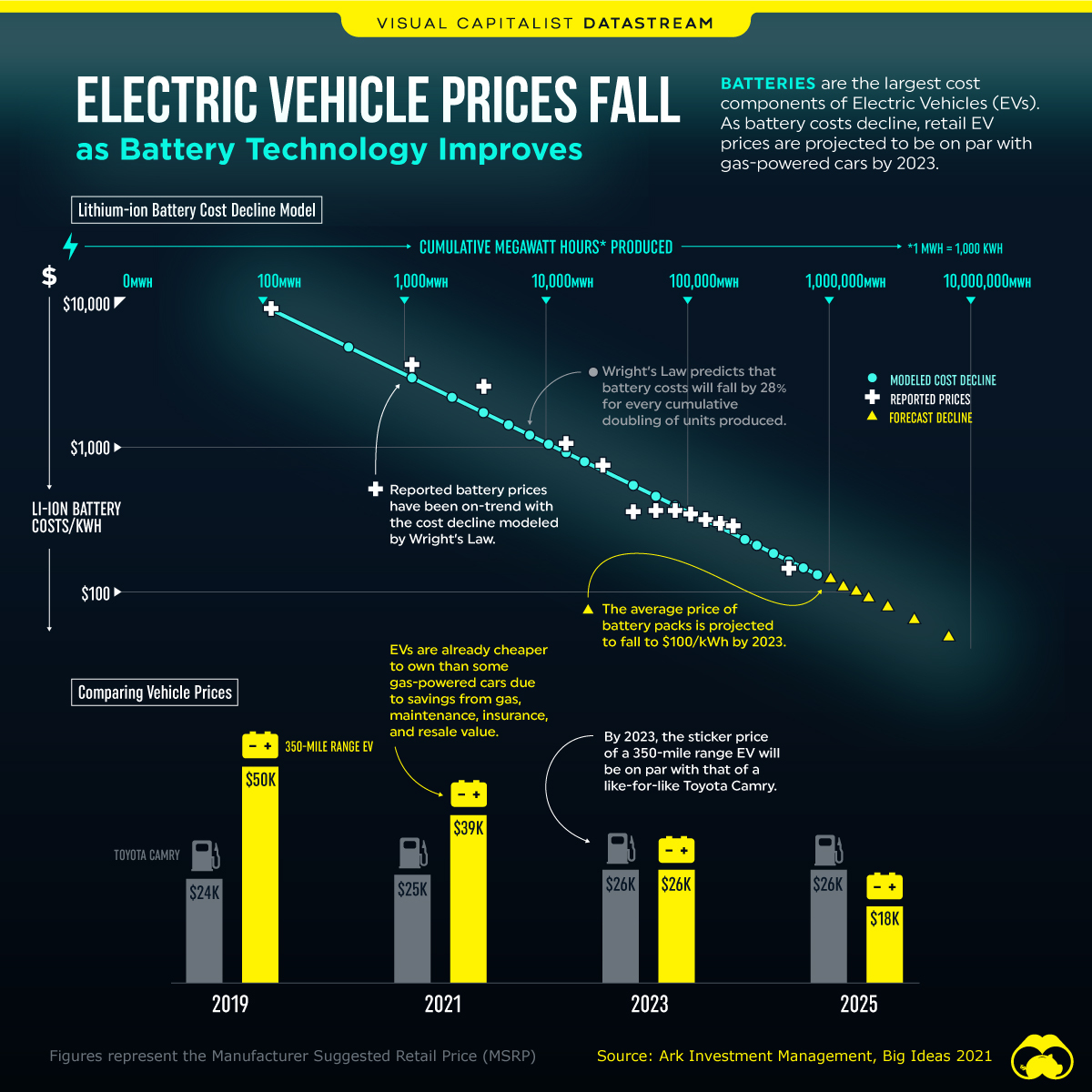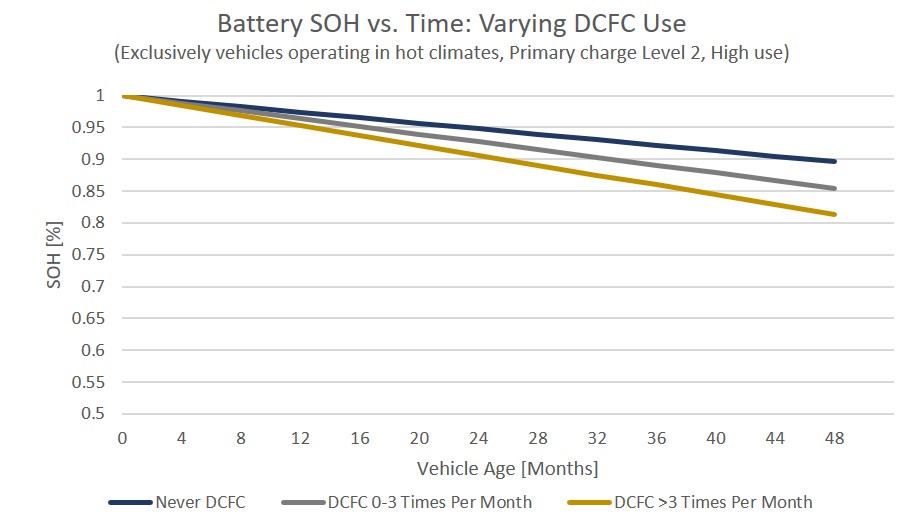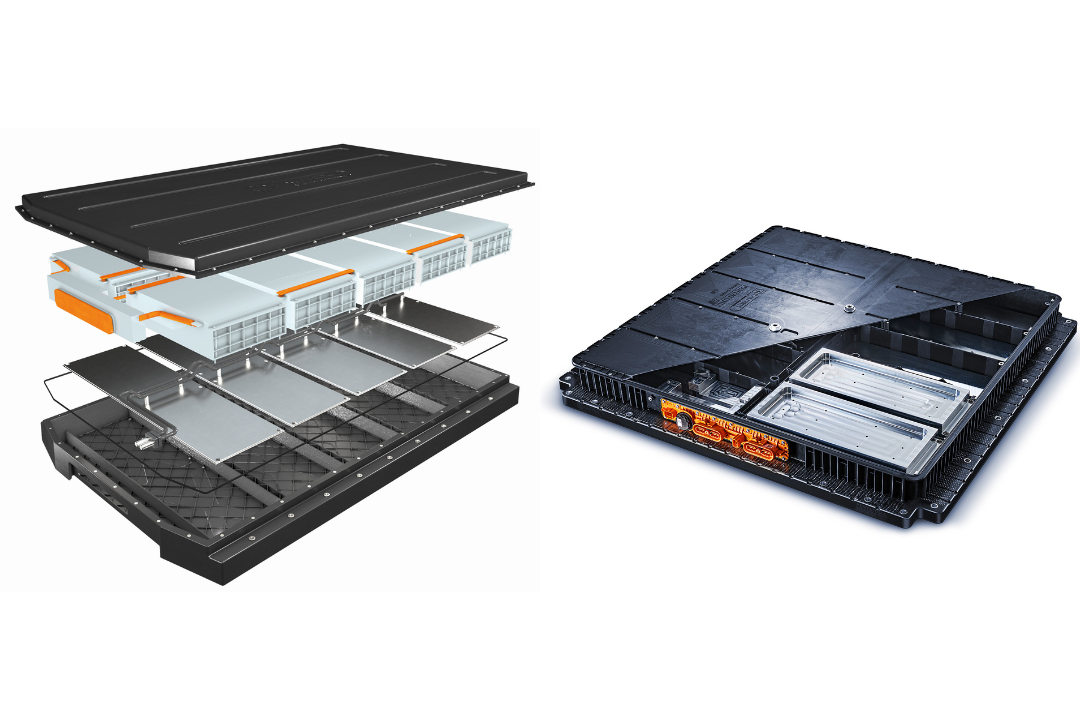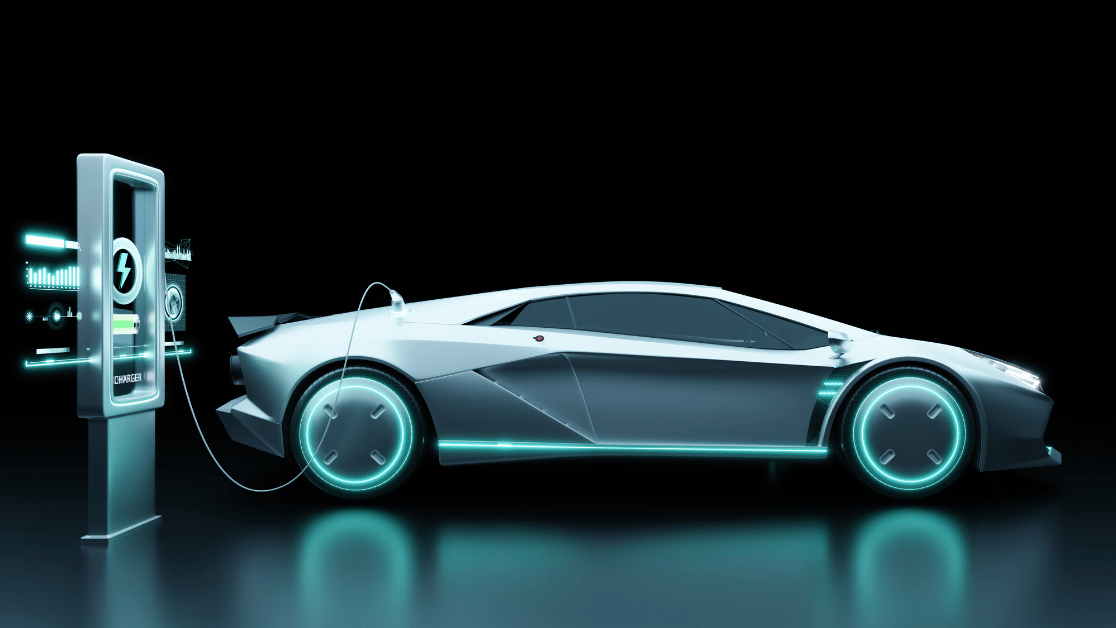Feel the rush of quiet speed? That’s the sound of the transportation revolution, propelled by breakthroughs in electric vehicle (EV) battery life and durability. We’re on the cusp of a world where range anxiety is a ghost of oil-guzzling past and EVs rule the roads. The visionaries are rewriting the rules, battery cycle by cycle, transforming not just our drives but our future as well. So strap in, ladies and gentlemen, for an electrifying ride into the heart of this mega-shift. The vanguard of transportation hasn’t just arrived, it’s thriving. Hold on tight, it’s going to be an exciting journey!
Understanding EV Battery Technology: A Historical Context

Let’s take a trip down memory lane and revisit how the electric vehicle (EV) batteries have evolved to reach their present state. It’s quite the electrifying journey.
EV batteries trace their roots back to the mid-19th century, around the time Thomas Edison was captivating the world with his incandescent light bulb; French physicist Gaston Plante was quietly introducing his rechargeable lead-acid battery. This invention would later serve as a key energy source for the early horseless carriages such as the Thomas Parker electric car in 1884.
Then came the era of Nickel-cadmium (NiCd) batteries in 1899, invented by Waldemar Jungner. They offered enhanced energy density – a game-changer that made electric cars more practical. That said, the popularity of these cars began to wane as inexpensive oil flooded the market, setting the stage for the ascent of the internal combustion engine.
Fast forward to the late 20th century, to a time when the negative environmental impact of fossil fuels was becoming increasingly evident, one can see the phoenix-like resurgence of electric vehicles. In 1980, John Goodenough made a prominent stride in the EV tale by inventing the Lithium-Ion battery. With their high energy density, these batteries could store more energy, charge quickly, and considerably extended the EV’s driving range. However, they came with an accompanying risk of overheating and potential combustion.
As we zoom into the 21st century, a revolution was brewing in the EV battery landscape – the advent of Lithium-Iron Phosphate (LFP) batteries. These provided a solution to the overheating risk associated with lithium-ion batteries, enhanced battery life, and were deemed to be more environment-friendly as they did not contain toxic heavy metals.
A critical turning point was the introduction of Tesla’s Roadster in 2008, powered by thousands of small, cylindrical, lithium-ion cells – contradicting the industry’s accepted logic of large, prismatic cells for electric vehicles. This revolutionary concept demonstrated that EV batteries could match, and possibly surpass, the performance and convenience of conventional vehicles.
Today, the race is on to further hone this technology. The focus is not only on enhancing the energy density but likewise securing the raw materials, fine-tuning the battery management systems, and refining the recycling process – collectively aiming to better the affordability, safety, and sustainability of EV batteries.
Time and again, the journey of EV batteries has demonstrated that with innovation comes a ripple of change, each iteration serving as a stepping stone for the next. This transformative evolution equips us to anticipate the remarkable ways in which this technology might shape our lives in the future. Buckle up, it’s bound to be an exciting ride.
The Evolution of EV Battery Life and Durability

The electric vehicle (EV) industry has seen remarkable advances in battery life and durability ever since the advent of the modern EV era. This story of progress begins at a time when an EV battery lifespan was approximately 100,000 miles or a duration of five years. That was considered a high-end estimate. However, with the passage of time and relentless progress in technology, EV battery life has improved drastically and has become one of the industry’s most impressive talking points.
The first-generation lithium-ion batteries, while revolutionary in terms of providing a viable alternative to internal combustion engines, were fraught with issues of longevity and durability. The wear and tear of charging and discharging regularly took their toll on these early batteries, often leading to a decline in performance over a period of just a few years.
However, engineers and researchers did not rest on their laurels. The quest for improved battery life and durability led to the introduction of nickel-metal hydride (NiMh) batteries. With a higher energy density and longer lifespan, these impervious NiMh units raised the bar for EV performance. Durability became a critical selling point, with batteries lasting far beyond their warranty period.
Fast forward to the present day and we see giants like Tesla boasting battery packs with a lifespan of about 500,000 miles. This progress can be attributed not just to the batteries themselves but also to the smart technology that monitors and manages these batteries. Today’s EVs come with sophisticated battery management systems that maintain optimal temperature and charging conditions to prolong battery life.
It’s not just about the lifespan; the ability of these batteries to maintain a high level of performance throughout their life cycle serves as a testament to their durability. They’ve come a long way from the time when EV owners had to constantly worry about battery degradation. Contemporary EV batteries degrade at a rate of less than 1% per year, illustrating both the strength and stamina of these storage units.
Interestingly, EV battery technology is still evolving. Scientists are testing new materials and configurations to extend battery life further, improve charging speed, and enhance overall performance. The future promises solid-state batteries, which could redefine the parameters of energy density and longevity.
So, in essence, the journey of EV battery life and durability is a parade through a timeline marked with constant evolution, relentless innovation, and a dogged pursuit of excellence. And given the pace of current research and development, the tale is far from over.
Current Landmarks in EV Battery Life

As we hurtle toward an increasingly electric future, there’s no disputing the paramount importance of battery life in the realm of electric vehicles (EVs). A major determinant of an EV’s feasibility and practicality as a replacement for its petroleum guzzling counterparts, battery life has seen some monumental advancements of late. Our focus here is to lay bare these game-changing strides in increasing the autonomy of our beloved, silently purring vehicles.
Tesla, the EV industry titan, has set a remarkable benchmark with its Model S Long Range offering a range-extending 375 miles on one full charge, as reported by the EPA. This is, by no means, an insignificant feat, pushing the Model S to the forefront of EVs that you could reliably travel long distances in without breaking into a cold sweat of “range anxiety”.
In the affordable EV realm, 2020 Chevy Bolt comes out swinging with an impressive 259-mile EPA range. It’s a significant jump from its 2017 model’s 238 miles, demonstrating that the envelope is consistently being pushed in terms of improving battery life even within a certain price band.
Meanwhile, Rivian, a sprightly newcomer, has edged its way into the spotlight with its Rivian R1T truck and R1S SUV offering a maximum range of over 400 miles. These vehicles march into previously uncharted territory, outfitting bigger, heavier vehicles with batteries that offer longer life. It’s a clear indication that battery technology isn’t limiting itself to small, lightweight EVs.
An honorable nod also goes to the Ford Mustang Mach-E, with its Extended Range variants promising an EPA-tested range of up to 300 miles. This balanced integration of performance-orientation with practical battery life is particularly noteworthy for the adrenaline junkies wanting a taste of speed without sacrificing the EV ideology.
On the sidelines, research and development teams worldwide are toiling away at maximizing the efficiency of charging systems, integrating renewable energy sources, and working on energy recovery solutions.
In summation, stalwarts like Tesla and Chevrolet, along with relative newcomers such as Rivian and Ford, have set significant landmarks in EV Battery Life. The cross-section of durability, efficiency, life, and affordability is no easy meeting point, but we are certainly witnessing, and will continue to witness, determined attempts to solve this complex equation. This race propels the industry ever faster towards unprecedented advancements, lightening the footprints we leave on our planet.
Existing Innovations in EV Battery Durability

Let’s flip the hood and get a solid look at the powerhouse that runs the show – the battery. In the last decade, some particularly audacious evolution has taken place in the electric vehicle (EV) battery sector, and we’re not talking about just a simple tech tweak or two. This has involved in-depth research and a technological leap, brimming with innovation, designed to bring EV batteries from simple energy storage units to long-lasting, highly efficient powerhouses.
For starters, Tesla’s “Battery Day” in 2020 introduced the world to the ambitious project – a new tabless battery cell configuration, termed the 4680, which shows serious promise. The ingenuity lies in the removal of the battery tab, improving battery life, energy density, and overall output. It’s not just about making EVs go faster, but making them last longer with less frequent charging stations stops; that’s a ‘road-trip worry’ wipe-out.
Moving on, the era of solid-state batteries is upon us. Brands like Toyota and QuantumScape are pioneering this innovation, aiming towards a shift from the conventional liquid electrolyte to a safer, more durable solid electrolyte. This patent-pending tech plans to deliver a longer-lasting battery with fewer charging intervals and lower risks of overheating or, even worse, catching fire.
Delving deeper into the tech pool, nanotechnology is shaking things up for EV battery durability. Nano-engineered batteries are promising a faster recharge, better temperature regulation, and improved durability. A simple example is Toshiba’s SCiB (Super Charge Ion Battery), which uses lithium titanium oxide in its anodes, promising that even after 5000 charges, it would still have 90% of its original capacity.
It’s not been all about hardware; there’s some cutting-edge software work being done as well. By utilizing artificial intelligence (AI) in battery management systems, lifespan and durability of EV batteries can be significantly extended. These smart algorithms study the battery’s performance, learn from it, and adapt charging patterns to enhance the lifespan and overall durability of the battery.
Education and transparency represent another set of ground-breaking changes being introduced by companies like Ford and Rivian. These companies are working towards a more user-centric approach, providing clear and accessible information on battery health, its maintenance and optimal usage, empowering users to maximize their EV battery’s lifespan.
In short, the innovations in EV battery durability are not just incremental but revolutionary. The landscape is transforming, with the collective future of transportation riding the waves of these quantum leaps in technology. This is not merely about improving what we have, but about radically breaking boundaries and reshaping the future of mobility. There’s been significant progress, but in many ways, the journey has just begun. Buckle up, everyone; the ride’s only getting more thrilling from here!
Future Prospects for EV Battery Performance

In the feverish race towards the dominion of electric vehicles (EVs), the performance of the battery is undeniably the most crucial element. Battery breakthroughs are expected to manifest across several dimensions, including longer life, greater durability, increased energy density, faster charging times, and lower costs.
The gains in battery life and durability we’ve witnessed in recent years are just the beginning. Research is already being conducted on solid-state batteries, which could significantly outperform today’s lithium-ion models. By replacing the liquid or polymer electrolyte found in current lithium-ion batteries with a solid, researchers can create batteries that pack more energy into the same amount of space.
What’s more, the ability to charge faster without compromising the battery life or safety could be a game-changer for EVs. Emerging technologies like extreme fast charging (XFC) are already promising charge times in the neighborhood of just five minutes—that’s about the same amount of time it takes to fill up a tank of gasoline.
Economically speaking, the million-dollar question revolves around reducing production costs without sacrificing performance. While we’ve seen significant drops in battery prices in the last decade, creating a cheaper, resilient battery that doesn’t skimp on energy density or charge speed is an enticing prospect. This scenario will not only make EVs more affordable but also give them a cost advantage over conventional cars.
Novel research into the utilization of alternative materials could also yield dividends. For instance, lithium-sulfur batteries promise a higher energy density than current options, but have been plagued by a short life cycle. If researchers can crack the code and make this technology viable, we could see a significant leap in battery performance.
However, it’s not just about reinventing the wheel—or in this case, the battery. There’s significant scope to tweak current lithium-ion technologies for better performance. Advanced management systems can optimize battery usage to get the maximum range and lifespan, minimizing degradation through intelligent charging and thermal management.
In conclusion, the future for EV battery performance is exceedingly bright. Advancements from solid-state and lithium-sulfur batteries to intelligent management systems and beyond are poised to revolutionize transportation. The horizon promises a world where range anxiety is relegated to history and EVs are cheaper, more reliable, and better performing than their internal combustion counterparts. As always, the key to unlocking these next-level advancements lies in relentless innovation and research.
FAQs
What’s so revolutionary about these EV battery breakthroughs, anyway?
So, how much longer do these new batteries last?
How robust is the durability on these new batteries?
Conclusion
The breakthroughs in EV battery life and durability signify a turning point in the transportation landscape. As more individuals, businesses, and public transportation networks go electric, the extended battery life and enhanced durability promise not only increased efficiency, but also a massive shift away from fossil fuels. These advancements solidify the notion that sustainability and superior performance can coexist. The future of transportation is not just electric, but increasingly sustainable, economical and resilient.
